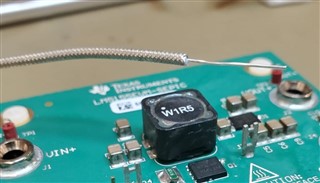Other Parts Discussed in Thread: LM5155
Hi,
I've loaded the LM5155EVM-SEPIC with 10 ohm load. Vin 17v. Switching frequency 2.14MHz
I'm observing very large ringing on:
Output diode's anode

FET's drain

The frequency of the ringing is the same on both nodes

That results in wide spectral noise

I've tried to use snubbers across the FET and/or across the diode, made the sepic capacitor C4 larger but no change in the ringing.
Please advise how to eliminate this ringing.














